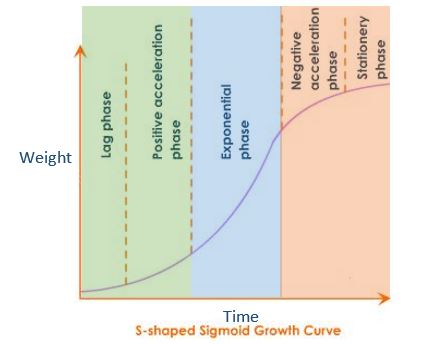Why Greenhouses and Vertical Farms Go Hand in Hand (Opinion)
 Since 2010, media hype has made vertical farming the darling of ag tech investors, as it was seen as a solution to feeding a growing global population. The climate and inputs in a vertical farm can be precisely controlled, which is especially important during a young plant’s development, when it’s most vulnerable. Integrating a vertical farm at this early stage with a greenhouse — a proven growing tool — can increase the variety of crops that can be grown, improve plant quality, and reduce operating costs.
Since 2010, media hype has made vertical farming the darling of ag tech investors, as it was seen as a solution to feeding a growing global population. The climate and inputs in a vertical farm can be precisely controlled, which is especially important during a young plant’s development, when it’s most vulnerable. Integrating a vertical farm at this early stage with a greenhouse — a proven growing tool — can increase the variety of crops that can be grown, improve plant quality, and reduce operating costs.
History of Growing Technologies
In the 1800s, French botanist Charles Lucien Bonaparte built the first commercial greenhouse in Leiden, Holland, to grow medicinal tropical plants. This was the first attempt to create a controlled environment for agriculture. Greenhouses have slowly gained a place in crop production since they emerged, and they now supply approximately 10% of fruits and vegetables grown.
It wasn’t until 1999 when the concept of the modern vertical farm was conceived by Professor Dickson Despommier. It took almost a decade before his vision materialized into the first commercial indoor vertical production facility. Vertical farms are the new shiny tool in the shed. They are a 100% controlled environment and can grow on every continent (even Antarctica) with less risk then a field farm or a greenhouse. The completely controlled, hygienic environment provides conditions that are ideal for nurturing young plants during their tender, early stage of development. The ability to stack growing tubs allows for a high density of plants in a small footprint. With the right business model that goes direct from farm to buyer, these farms can also grow leafy greens profitably.
How Plants Grow
Plants have three distinct stages of growth: lag phase, exponential phase, and negative acceleration phase. By understanding each developmental stage, we can precisely determine the quantity of inputs needed to grow quality biomass in a shorter time. In turn, we can uncover which farming technologies are best suited for each stage of plant development to achieve optimal plant growth. A Sigmoid Growth Curve is an excellent tool for plotting the three stages of plant development.

Lag Phase: During this phase, the plant grows slowly and cells are metabolically active and increase only in size. Regardless of how many excess inputs are given (light, water, nutrient, CO2), the plant will only grow as fast as its cells can metabolize. During this phase, plants are the most vulnerable to pests, disease, and weather, with their success dependent on the proper environment.
Because indoor vertical farms use 100% controlled environments, they can provide consistent temperature, humidity, and ventilation in a hygienic, pest-free setting. They can also provide the low input doses the plants require, and in turn lower operating costs. Although greenhouses and field farms are capable of propagation, their susceptibility to daylight hours, seasonality, and pest exposure can cause propagation losses as high as 30%.
Exponential Phase: During this phase, plants experience exponential growth. Cells are dividing rapidly and new tissue is formed, increasing the plant’s weight. Its critical during this phase to provide the right climate and deliver the precise amount of light, nutrient, water, and CO2 to meet the plants demand so it can grow strong and healthy.
Because plants show higher transpiration rates and require more nutrient, CO2 , and µmols of light at this age, a greenhouse can be more economical for crops in the exponential phase. A semi-controlled or at times, uncontrolled environment will not necessarily hurt the plant’s development at this age due to its resilience. By combining natural sunlight usage with semi-controlled equipment such as evaporative coolers and venting, operating costs will be optimized.
Negative Acceleration/Stationary Phase: During this phase, the plant approaches maturity as cell division decreases and the rate of growth declines — producing flower and seed if left to grow long enough. When vegetables are grown for commercial production, they are harvested before reaching the negative acceleration phase, so they never flower or produce seeds. This stage is optimal for greenhouse and field farm growth because you have free sunlight.
Conclusion
With agriculture being challenged to grow more crops using less soil and water, now is the time to become agnostic to how we grow and consider the integration of technologies to grow “more crop per drop.” Integrating greenhouses with vertical farms will play a vital role in the way we grow plants for food, ornamentals, medicine, cannabis, and biological feedstock for industrial manufacturing.








